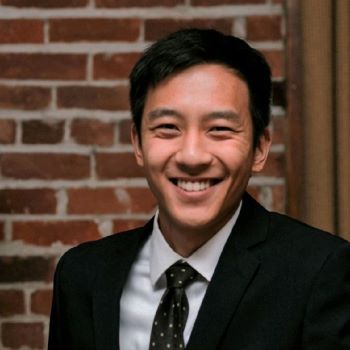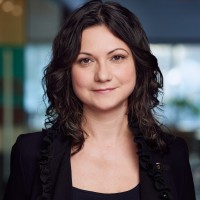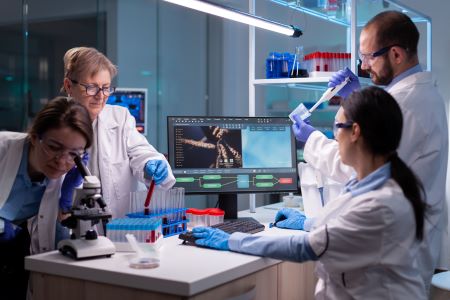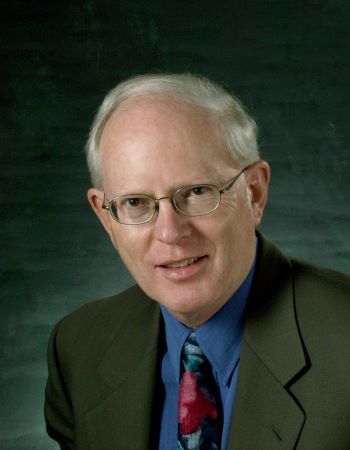Teaching and learning science: Fail our kids, fail our country
 By Marcia Cunningham
By Marcia Cunningham
Marcia Cunningham is Co-founder and Partner at CGC Educational Communications based in Toronto.
Canadian public school science education is failing kids, and our country.
I recently read Nobel laureate John Polanyi’s defence of teaching pure science in an article in Research Money, and it reminded me that I had interviewed John Polanyi in 1987, just a couple of years after he had won his Nobel prize.
I remember that he was very ill with a bad chest cold, but he managed to do the interview (in person, in those days) despite wanting to cancel and just go home to bed. He knew we had a deadline and what we were trying to achieve, and I will always appreciate him for putting science, and kids, first.
That interview was for a series I was producing for TVOntario called Helping Science Happen. It arose out of a national study, conducted just the year before (1986), which documented how poorly science was being taught across our country, and it focused on helping teachers with teaching a subject they actually feared.
We crossed Ontario, filming the best practices in the classrooms of our most dedicated and enthusiastic K-12 science educators, particularly hands-on activities that engaged students, encouraging those magical “Aha!” moments that you only get from facing and meeting a challenge.
Another team took those programs across the province to help retrain the vast majority of teachers who still taught science “from the board,” by conducting hands-on workshops with them to demonstrate the fundamentals (many science teachers had almost no science background) so that they felt more comfortable doing hands-on science with their own students.
Fast forward nearly 40 years. I am still teaching hands-on science to teachers and little has changed. In fact, it has actually gone backwards.
Funding for teacher training is little to non-existent in our “cut the budget” times with each student in my province, Ontario, being funded by $1,500 less (a 20-percent reduction) currently than they were in 2018.
Yet teachers, once again with poor science backgrounds, are faced with new and challenging curricula. They also have students with even higher needs than before, in what is known as the “de-streamed” classroom and the COVID learning deficit.
Many teachers fear teaching things like physics and chemistry to the point where they just don’t, or it’s one lesson they find off the internet, now that updated textbooks are far too rare. And our students are the poorer for it.
Funny thing, but Canadians are a very inventive people. Perhaps due to our pioneer beginnings, perhaps our ethnic mosaic, and we know that our First Peoples survived thousands of years on this land being inventive in so many ways.
We now have ideas from all over the world functioning in research labs in all of our universities. And there are many people, like those in the Science to Business Network, who make it their mission to bring ideas out of the lab and into viable business opportunities.
Yet we are still lacking the fundamental platform on which to build a Canadian society of scientifically literate young people. Scientists who come from other countries are frequently appalled at how poorly science is being taught in our public schools (private schools often employ teachers with advanced science degrees).
We need to turn kids on to science in high school, if not before. They need to appreciate the magic of discovery firsthand, so that they will dedicate their lives to pursuing the betterment of society, and our economy, through science.
Teaching pure science is where the “magic” happens
We are also entering a new economic era – one with an opportunity to build Canada into a truly world-leading country.
Our government is plowing ahead with large infrastructure projects to reduce our dependence on our fractious southern neighbour. We are making deep and serious connections with countries that we only shook hands with before.
This will give our industries some momentum and will lead to jobs in large sectors of our economy. And they need young people to fill these jobs.
According to Michelle Branigan, CEO of Electricity Human Resources Canada, the electrical industry alone will need 28,000 new people by the year 2028. That is just three years away.
All of our other industries are facing the same phenomenon of changing demographics: retiring workers (the Boomers) needing to be replaced by humans. Yes, AI can fill some jobs, and will. But the vast majority will still need skilled people, and most of those skilled people will need science.
When Bill Nye “the science guy” was an engineer at Boeing he was thinking about doing a TV program to excite youth about science. His initial idea was to focus on how things were built using science, like bridges, roads and airplanes; he was an engineer, after all.
But in discussing his ideas with Carl Sagan he was convinced otherwise. Sagan said, “Teach pure science; that’s where the magic happens and where kids get most excited.”
Fortunately for the millions of kids worldwide who grew up on Bill Nye’s brilliant programs, he listened to Carl Sagan. John Polanyi is essentially saying the same thing. Are we listening?
We do not have enough young people entering STEM (science, technology, engineering and math) careers. In Canada, only about 20 percent of students choose STEM oriented careers, while in China it is double that.
I’m not an expert on China’s education system, but they must be doing something right. They are not depending on people from other countries to fill their high-end jobs; they are exporting them to countries like Canada.
We benefit from these people. But we can’t go on having a two-tiered system, where the best-educated people come from other countries to make their discoveries in Canada, and the Canadian public school-educated people can’t find a job.
Education, the largest “business” in the world today, is rarely spoken of when these topics arise.
Recently, the former minister of education for Ontario stood on a podium with a bunch of people as his backdrop, many of them kids, to talk about Ontario’s energy industry. Not once was education mentioned – by the former minister of education!
Why this massive disconnect? We focus on universities and colleges, but completely forget the path that leads people there.
In our work creating education programs to help students figure out how and why the real world works, we encounter this disconnect all the time. And we see its enormous cost – students who feel they have no hope, who have never been turned on to anything and believe there is nothing out there for them.
We see teachers who are burned out, fearing their subject, and fearing that their students are not being offered anything of substance. Kids who have never experienced the magic of discovery, of being challenged, and overcoming their fears by experiencing something themselves – not through a screen or a textbook.
It is one of the most exhilarating things imaginable when you watch a group of people try something challenging for the first time – to watch them fail a few times, keep trying and then succeed.
The cheers! The whelps of joy! That’s real, and it’s possible. It’s learning by doing – learning in the real sense.
Turning science into a natural part of teaching and learning
So, how do we start to turn science into a natural part of teaching and learning? Here are a few ideas.
When pre-service teachers enter a two-year program to achieve their education degrees, let’s make science education paramount. Forget the (current) one optional science teaching course. Instead tackle this problem with the seriousness it deserves.
For secondary school teachers, make an undergrad science degree mandatory before they are accepted into the program, and then teach them how to engage students in the magic of experiential, hands-on learning.
For elementary teachers, incorporate STEM into every subject being taught. Hire professors from STEM disciplines to work with education students and demonstrate to them, and to their future students, how STEM is active in every facet of our lives.
Make this teacher training hands-on, make it real and make it count. Every student who leaves with a BEd or MEd should feel confident in the content and the skills to teach their students how the real world works (and STEM underlines our entire world).
And while we’re at it, let’s flip the coin. Why not offer every graduate of a post-secondary institution a chance to spend time in a classroom, working with teachers to share their newly found skills and knowledge with young minds? Teachers could use the support, and the newly graduated could use a reality check.
The sobering reality of today’s classroom might encourage ongoing engagement as well, as it’s hard to be apathetic when you actually know the score. And let’s give our graduates enough experience with young people to build champions for bettering their educational experience.
There are also many non-profit groups, like Actua, Scientists in School, and Visions of Science (and so many more) that enrich in-class and after-school science learning. These groups are often the reason a child is turned on to STEM, yet they struggle to get ample funding to make a difference.
To really make that difference, why don’t we have them engage the teachers in this learning, so their classroom visits are educational experiences for teachers as well as students? That way they are not just one-offs but can have a lasting impact. This is another way to give teachers the confidence to take on hands-on science on their own.
This becomes professional development as well as classroom partnership. And it could also be a meeting place where corporate sponsorship has greater impact; these non-profits become a conduit for knowledge transfer from the sci/tech sectors into the grassroots of learning.
Forty years ago, Canada embarked on a national strategy to improve STEM education. Out of that came a pan-Canadian science curriculum and teaching strategies that helped educators make learning science meaningful and fun in the classroom.
The success of that time is evidenced by the large number of “experiential learning” department heads currently in high schools. Schools know that this needs to happen, but resources, both human and material, are needed to make sure that experiential learning happens in every subject, in every classroom, and particularly in the science classroom.
The strategies haven’t really changed; they just need to be re-implemented with vigour and rigour. Canadian kids deserve this, and with the right support, teachers can give it to them.
It is long past time that Canada’s education system started to provide real science learning for teachers and students.
Provincial governments need to stop using public education as a political football and actually fund the elementary and secondary system that is deeply failing our students, especially in STEM.
Canadian parents need to speak out and advocate for having scientifically literate children, knowing that this will set them on a path to success in our new, growing economy.
Let’s start producing a new wave of inventors and innovators. It’s not that difficult. We just need to open our eyes to the problem and figure out solutions. That’s the fundamental basis of innovation, after all.
I know our young people can thrive if given the opportunity. Let’s focus on actually teaching science, helping our teachers find purpose in truly engaged and successful students.
We are building Canada. We need to build the young people who will power us forward. There has never been a better time.
R$
| Organizations: | |
| People: | |
| Topics: |
Events For Leaders in
Science, Tech, Innovation, and Policy
Discuss and learn from those in the know at our virtual and in-person events.
See Upcoming Events
You have 0 free articles remaining.
Don't miss out - start your free trial today.
Start your FREE trial Already a member? Log in
By using this website, you agree to our use of cookies. We use cookies to provide you with a great experience and to help our website run effectively in accordance with our Privacy Policy and Terms of Service.





